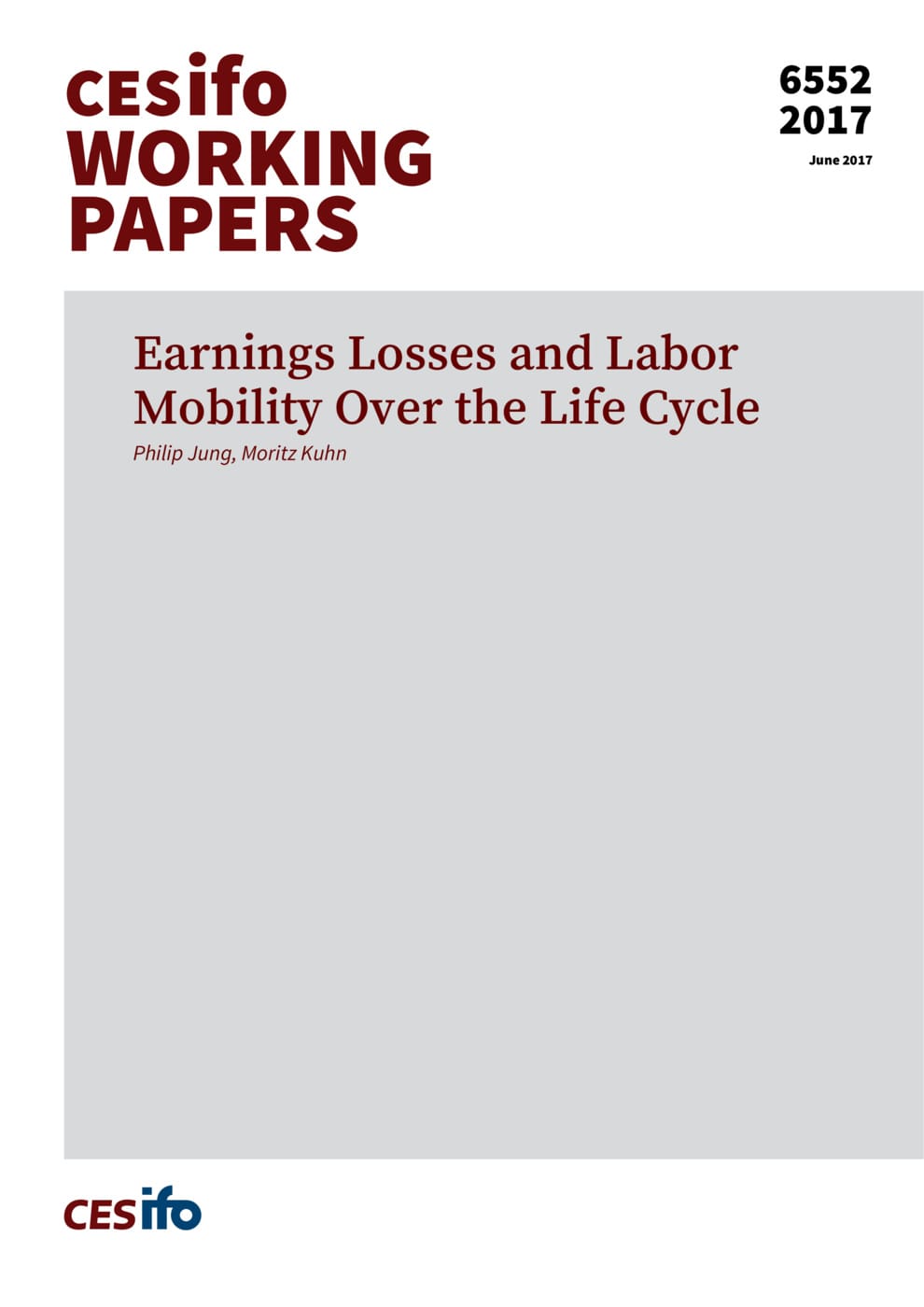Earnings Losses and Labor Mobility Over the Life Cycle
CESifo, Munich, 2017
CESifo Working Paper No. 6552

Large and persistent earnings losses following displacement have adverse consequences for the individual worker and the macroeconomy. Leading models cannot explain their size and disagree on their sources. Two mean-reverting forces make earnings losses transitory in these models: search as an upward force allows workers to climb back up the job ladder, and separations as a downward force make nondisplaced workers fall down the job ladder. We show that job stability at the top rather than search frictions at the bottom is the main driver of persistent earnings losses. We provide new empirical evidence on heterogeneity in job stability and develop a life-cycle search model to explain the facts. Our model offers a quantitative reconciliation of key stylized facts about the U.S. labor market: large worker flows, a large share of stable jobs, and persistent earnings shocks. We explain the size of earnings losses by dampening the downward force. Our new explanation highlights the tight link between labor market mobility and earnings dynamics. Regarding the sources, we find that over 85% stem from the loss of a particularly good job at the top of the job ladder. We apply the model to study the effectiveness of two labor market policies, retraining and placement support, from the Dislocated Worker Program. We find that both are ineffective in reducing earnings losses in line with the program evaluation literature.
Labour Markets
Fiscal Policy, Macroeconomics and Growth